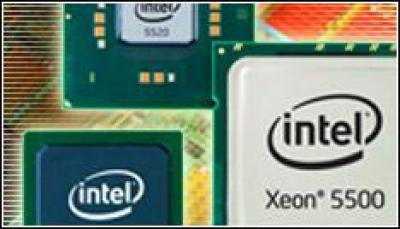Strong Intel Results Point To Economic Stability

Intel’s strong second quarter fuels hope that the global recession that has hammered the IT industry may be easing
Three months after CEO Paul Otellini announced that the PC market had bottomed out, Intel’s latest quarterly numbers indicate that the industry may be stabilising.
Intel on 14 July posted strong numbers in the second quarter, including (£4.9bn) $8 billion in revenue and a $1 billion profit. However, when the European Commission’s $1.45 billion fine for antitrust violations was factored in, Intel’s profit swung to a $398 million loss. The EC levied in the fine in May, and Intel has since appealed.
Analysts were encouraged by what they saw from the chip maker.
“They are an early indicator of where the industry is going, and it seems to be going well,” Gartner analyst Leslie Fiering said in an interview after Intel’s conference call with analysts and journalists.
Echoing what his counterparts at other companies have said throughout the day, Otellini observed that the global recession had forced businesses and consumers alike to hold back on buying new systems. As the recession begins to ebb, Otellini said he expects purchasing—at least in the consumer market—to begin to return to normal seasonal patterns in the second half.
The enterprise market for servers also could continue to grow, though Intel executives said demand for businesses PCs will remain stagnant.
During his meeting with analysts 14 July, Dell CEO Michael Dell said businesses were extending the normal refresh cycles for their PCs, notebooks, servers and storage devices for a year or longer, and that eventually they were going to have to replace the hardware.
Similarly, Microsoft CEO Steve Ballmer suggested in an address at his company’s Worldwide Partner Conference in New Orleans that Microsoft’s upcoming Windows 7 operating system also could help convince businesses to refresh their PCs.
“Even if you take the assumption that [the economy] won’t turn around for a long period of time, every minute of every day we’re building a pent-up demand for IT,” Ballmer said.
Fiering said many business executives have indicated to Gartner that they plan to upgrade to Windows 7, but through attrition as they upgrade their hardware, rather than by proactively buying new systems to get the operating system.
And the PC space continues to struggle. Research company iSuppli announced on 14 July that in 2009, for the first time since the dot-com bust in 2001, the PC industry will see a contraction in the number of units shipped, thanks both to the drop in IT spending and to the sharp decline in desktop purchases.
Intel’s earnings also come as reports surface that the chip maker may release its upcoming “Nehalem EX” chips for servers with four sockets as early as August, and that it is preparing the release of three new Core i7 “Lynnfield” processors for PCs.
Otellini also said during the conference call that Intel will continue with its aggressive push to expand into new areas beyond traditional PCs and servers, including into the embedded market, mobile devices and software.
Intel is in the process of buying embedded software maker Wind River for $884 million (£554m), and is continuing to see success with its year-old Intel Atom processor in the burgeoning netbook market and other areas. For the second quarter, revenue from Atom was $362 million, a 65 percent increase over the first quarter.
Fiering said Intel is smart to expand its reach. Executives there understand that the market is changing, and that the younger generation will use smartphones to do what older folks have traditionally used PCs for, Fiering said.
Looking forward, Intel executives said they expect revenue in the third quarter to be about $8.5 billion.